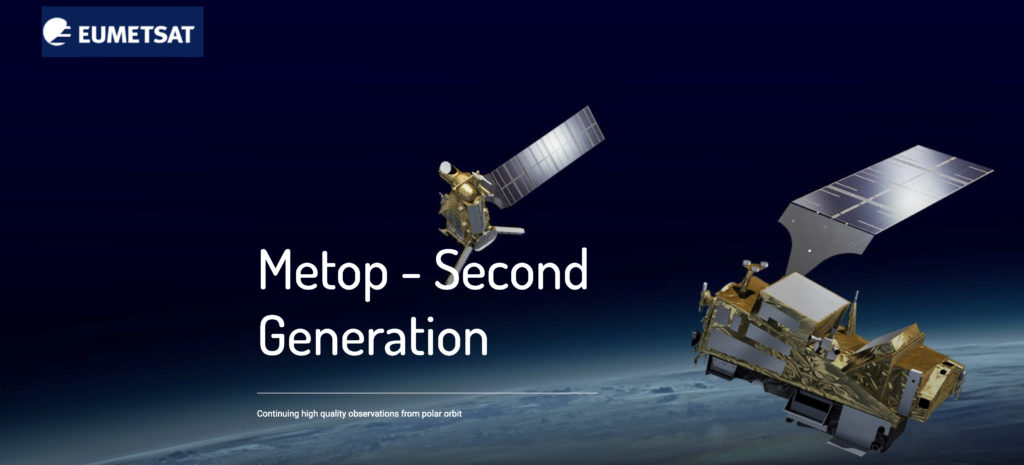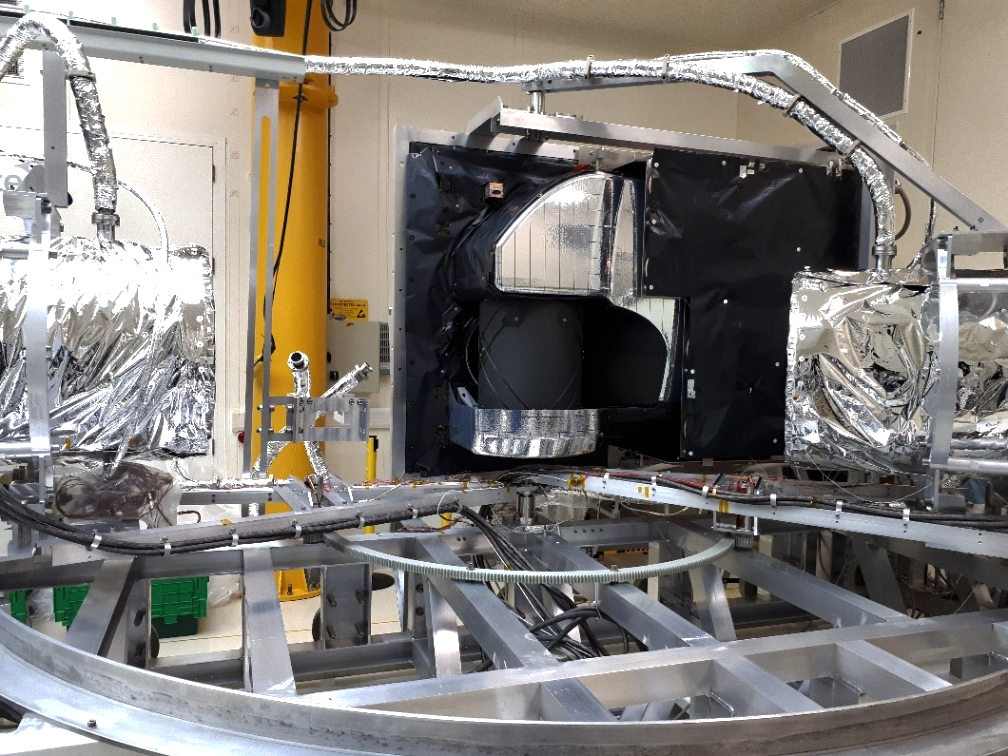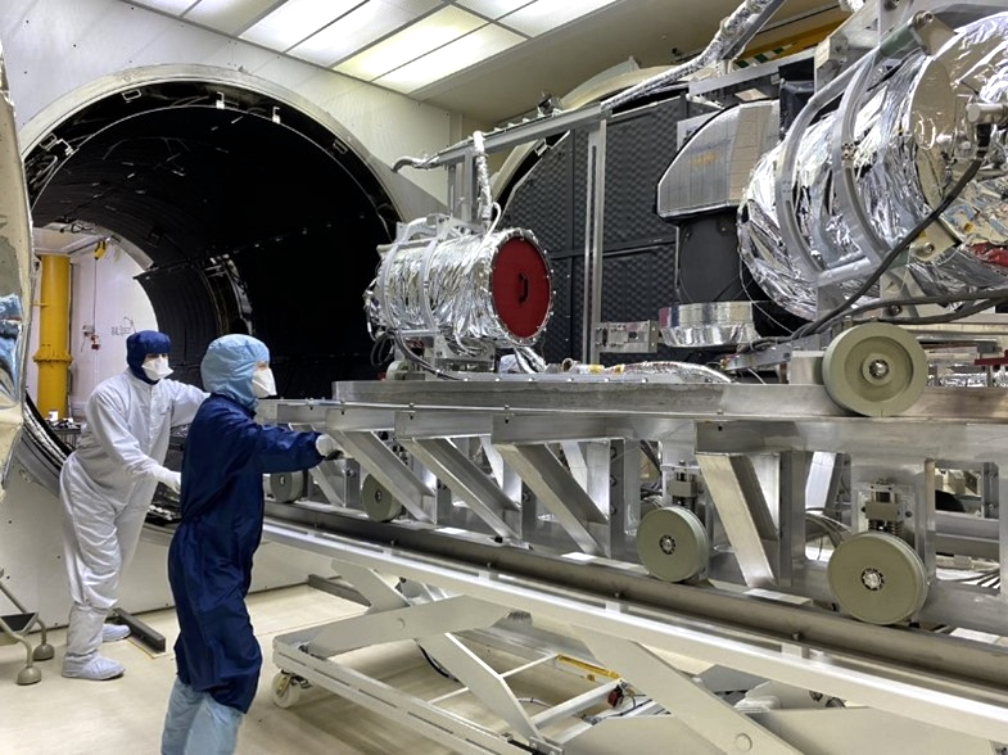


ESA’s MetOp Second Generation (SG) series, developed under EUMETSAT Polar System Second Generation (EPS-SG) and integrated by Airbus Defence and Space, will consist of three successive pairs of satellites working together to gather valuable data for global weather forecasting and climate monitoring.

One of the instruments on board these satellites is the Microwave Sounder (MWS), which will support weather prediction by gathering data on atmospheric temperature and humidity measurements. The MWS proto flight model (PFM) is the first of a total of three flight models – one for each pair of satellites – and has successfully undergone its qualification testing.
RAL Space built the receivers for the MWS instrument and also created the ground support equipment to radiometrically calibrate the instrument. Earlier this year, Airbus completed a successful campaign to calibrate the instrument using RAL Space facilities, supported by both the RAL Space calibration project team and the thermal vacuum test team. These tests ensure that the instrument’s measurements are as accurate as possible while operating in the extreme conditions of space.
MWS will gather atmospheric data that is important not only for weather predictions, but also for scientists to understand how the climate is changing. To do this, it must be able to accurately measure the radiation emitted by the Earth’s surface and atmosphere and analyze what’s known as Earth’s “black body spectrum.”
All objects at a temperature above absolute zero (-273.15°C) emit thermal radiation. The company knows that the amount and wavelength of this radiation is dependent on the temperature of the object, and an object that emits radiation “perfectly” – according to the lines on the curve in the image below – is known as a black body.

The Earth’s black body spectrum isn’t perfect because molecules in the atmosphere absorb some of the planet’s radiation and create a gap in the spectrum. MWS measures the radiation emitted and analyses the width and depth of these spectrum gaps, which tell scientists what molecules is in the atmosphere, how much of it there is, and at what altitude it is found.
To measure data accurately, MWS needed to be carefully calibrated. To do this, the team at RAL Space designed and built a rig which included two black body “targets” – one representing Earth, and one representing the rest of space – for the instrument to calibrate itself against.
MWS collects microwave data, so to make sure that these blackbody targets represent the Earth and space accurately these black body targets had to be carefully designed to absorb as much microwave radiation as possible.
The next steps for RAL Space’s involvement with MetOp-SG include testing the recurrent MWS flight models for the two subsequent pairs of satellites, which is due to take place within the next year. RAL Space will also deliver a third black body target that will be used to verify the calibration of the instrument once it is integrated onto the satellite, during the satellite TVAC testing campaigns.
Elise Allthorpe-Mullis, Project Manager for MWS at RAL Space, said, “The blackbody targets for MWS were unique and complex to design, but the engineering, production, product assurance, and environmental test teams here at RAL Space are great at responding to a challenge. A lot of hard work was put in to successfully complete the commissioning of the calibration rig and targets in February, and it was brilliant to see it in action for the Airbus test team during the MWS PFM campaign.”
The targets can be rotated around the instrument to cover the Earth and cold sky field of views of the instrument while it is in space, using the track part of the rig, built by Magna Parva Ltd.

Cat Gould, RAL Space systems engineer, said, “Performing calibration testing in vacuum chambers is an incredibly important stage in qualifying an instrument. We tested the MWS PFM hardware down to -55°C, which is approximately the temperature that it will be when it is on the satellite in space, and the targets on the rig were able to be accurately temperature controlled to between -190°C and 40°C. This meant the instrument could calibrate against lots of different blackbody spectrum lines. This whole testing process required 24/7 monitoring which meant both RAL Space and Airbus test teams had to work in round the clock shifts.”

RAL Space is involved in a number of other projects relating to MetOp-SG, including Sentinel 5 for ESA’s Copernicus program and the Microwave Imager Radiometer (MWI) for MetOp-SG B. As well as being used for weather forecasting, the data from MetOp-SG will be sent to the Centre for Environmental Data Analysis (CEDA, based within RAL Space), where atmospheric scientists can use it to study the Earth’s climate.
